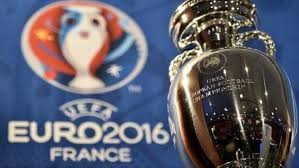9 host cities will welcome, starting Friday, June 10, the Euro 2016 football tournament. Some cities, like Nice or Marseille, are expecting several tens of millions of euros in economic benefits, taking into account the spending of supporters both inside and outside the stadiums.
Each match will be followed by more than 30,000 spectators and nearly 150 million television viewers. Several sectors are involved: transportation, logistics, tourism… The city of Nice will host 4 matches. In Marseille, 6 matches will be played.
The first and most important aspect is the fan zones. In Nice, the fan zone will operate throughout the competition, spanning 31 days. With two broadcast areas (Jardin Albert 1er and Théâtre de Verdure), it will be able to accommodate up to 10,000 visitors who can follow the 23 matches broadcast on two giant screens. An animation zone on the quai des Etats-Unis will also be set up.
In Marseille, the fan zone will be able to accommodate up to 80,000 people. 45 matches will be transmitted. There will also be a village area with numerous activities (concerts, sports, etc.).
Economically speaking, if France expects to host, according to forecasts, more than 1.5 million visitors, Nice is expecting 250,000. In terms of economic benefits, an estimated 81 million euros are anticipated (according to the CDES Limoges study in connection with UEFA), with 53 million for spending around the stadium and fan zone. In Marseille, 350,000 visitors are expected. Projected economic benefits are 181 million euros.
6.5 million individuals, including 1.5 million foreign visitors, are expected to follow the 51 matches in the fan zones and viewing areas in the 9 host cities of the European competition.
The study anticipates a massive economic impact, in addition to the impact on employment, the regions, and France’s general tourism attractiveness. In Nice, in particular, 1,000 jobs will be created throughout the event period according to Pôle Emploi.
The 9 host cities will generate a total of 1.3 billion euros thanks to accommodations, regular expenditures on match days (food and beverages), urban public transportation costs, and transportation companies used by visitors, whether they are foreigners or not, outside the urban area or host cities.


